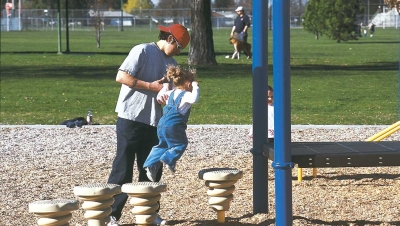Recently, I came under suspicion of being the pied piper of playground safety. Some people question that the rulemaking process has gone too far. Why does the playground industry continue to push playground rules? Some lament that “new rules and new information each year are hard to keep up with, and why should we worry, nobody has ever been hurt on our playground.”
Playground safety can be separated into two categories: those safety features that are put in place prior to children playing on the equipment, and those that relate to the behavior and how children use the equipment. In the first category, two entities, the United States Consumer Product Safety Commission (CPSC) and the American Society of Testing and Materials International (ASTM), develop safety “rules” that affect the kind of play equipment that is being manufactured today.
The CPSC, for example, is charged with protecting the public against products that are found to be defective and even can be fatal. The ASTM, on the other hand, does the testing on products and then develops minimum technical standards for them. Almost everything manufactured has an ASTM standard.
To further distinguish the difference between the two safety “rule” making entities consider this: the CPSC is a group of employees of the U.S. Government who gather data from a myriad of sources to create safety guidelines and tip the public about products that are known to be unsafe.
The ASTM is comprised of individuals from a wide range of vocations who volunteer their time on committees of particular interest to their profession. The ASTM committee for playground equipment is made up of manufacturers, consultants, educators, installers, engineers, designers and other professionals in the field. Anyone can volunteer to be on an ASTM committee—including those disillusioned with playground rules. Committee members come from different backgrounds with varying personalities and experiences.
So it is easy to believe there are some committee members who think we should strive to eliminate all playground-related incidents. To do so, endless rules and guidelines have to be written to prevent literally any child from being hurt on a playground.
Other committee members think no or very few standards are needed on playgrounds.
Most members of the ASTM playground committee take a more realistic approach to rule-making and strive to create a required minimum standard to help reduce the number of serious and debilitating injuries and eliminate the potential for fatalities.
There are guidelines in all aspects of our lives intended for our safety. Car safety belts, children’s car seats, airbags and traffic rules all contribute to a safer driving experience. Like-wise, surfacing, safety zones, elimination of protrusions, entanglements, and entrapments, and other current playground safety guidelines all contribute to a safer playground experience.
These minimum safety guidelines have proven very effective in reducing playground-related fatalities and have curbed many potential playground hazards.
We have the CPSC and volunteers of the ASTM playground committee to thank for this. Has the rule-making process has gone too far? I say no. They are a great beginning to protecting the children of America while at a local playground.
The future of playground rules is yet to be determined. We may move into more “regulation,” or it could level out as committees determine our current guidelines to be adequate. Anyone can be personally involved and have his opinion heard by joining ASTM or contacting the CPSC. Your involvement may be part of the voice that determines the future of playground safety guidelines.












Add new comment